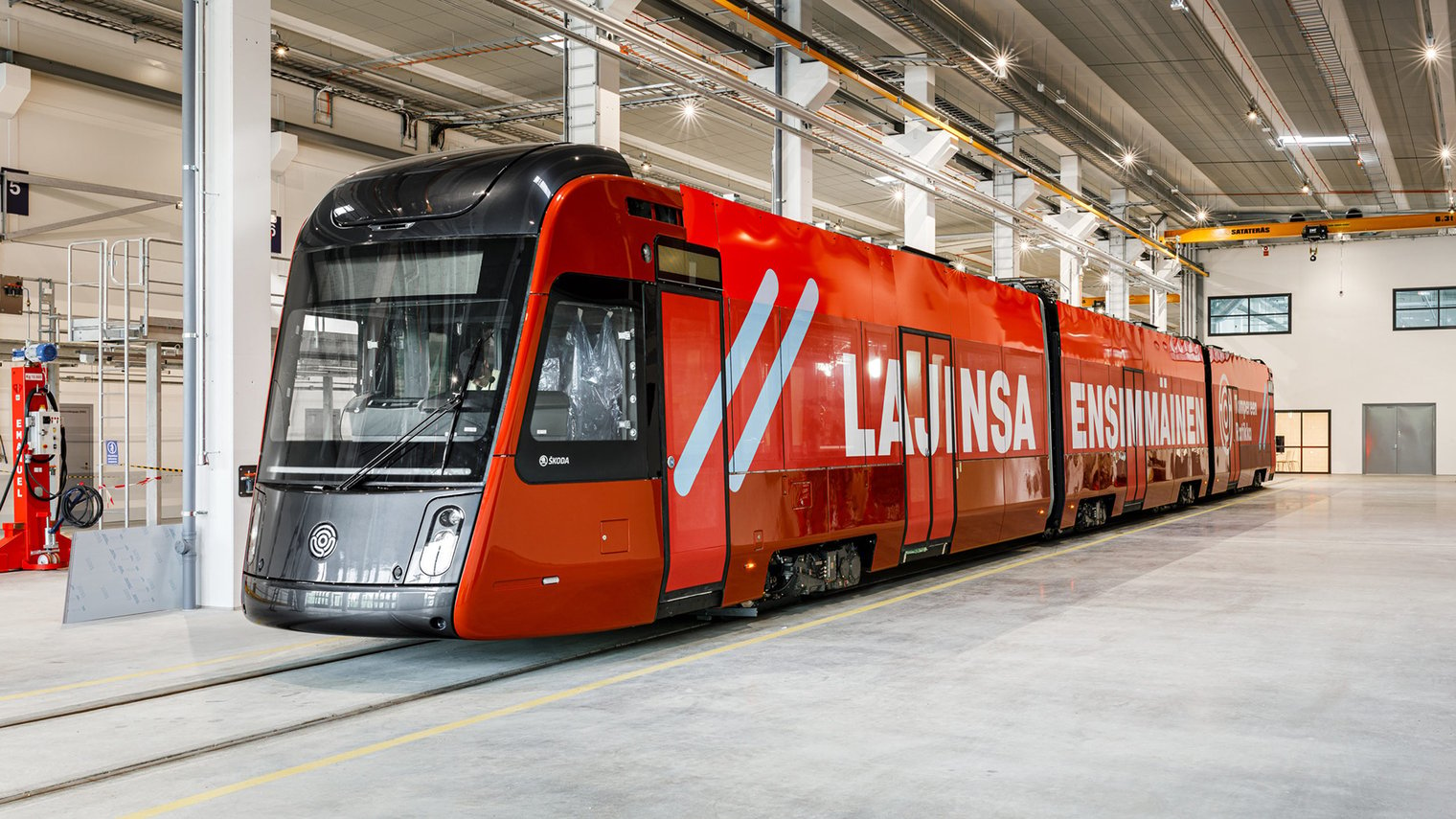The first tram built for the Tampere tramway was delivered from the Škoda Transtech plant in Kajaani to Tampere in May 2020.
According to the plans, a total of 19 trams will operate in the Tampere tramway network in 2021 after the final type approval. In addition to designing and building the trams, Škoda Transtech is in charge of maintenance operations, whereas VR is responsible for driver services and Tampere Tramway Ltd. for the construction of the tramway infrastructure and the procurement of rolling stock. Cinia built a reliable and cost-effective telecommunications solution for the trams.
The Tampere tramway is an ambitious project, and the high quality requirements are evident every step of the way.
- From the beginning, we have wanted to enable the realtime collection and utilisation of various types of information, meaning that vast quantities of data is constantly moving into and out of the tram, says SmartRail Project Manager Kai Hermonen from Škoda Transtech Ltd.
A functional, integrated telecommunications link built between the tram and the rest of the infrastructure, securely transmitting information for various operators, is a key factor.
- All the operations, from maintenance to infrastructure management, have to be based on information, says Hermonen.
Even though the first tram has arrived in Tampere, there is a lot of work still to be done before the operating environment is finished. Communication between devices and tram networking have been designed to meet modern requirements, but it is also important to offer a functional basis for building future solutions.
With the right choices and wellexecuted solutions, the sky is pretty much the limit.
Among other things, data enables the development of an intelligent passenger count system. The driver can use the management system to monitor the number of people, bicycles or prams on board. This information can also be delivered to the passengers waiting at the stop.
Cinia´s Telecommunications Solution enables a Multi-Supplier Environment
The solution produced by Cinia focuses on a system developed for the needs of the rolling stock, independently performing various necessary tram functions. The solution offers all data a single, secure channel in and out. Cinia’s comprehensive solution makes it easier to integrate systems from different suppliers. In addition, potential future changes will not require dismantling the entire system.
- The lifecycle of a tram is about 30–40 years, which means that the devices must stay up to date through upgrades or be replaceable with technology that meets changing needs. Cinia’s solution enables the integration and replacement of various devices without overlapping issues. In practice, all the data travels through a single channel, says Hermonen.
Right in the middle of the critically important implementation stage, the COVID-19 pandemic turned the world upside down. Usually, the plant and depot are teeming with people in the implementation stage as suppliers are making adjustments and carrying out customisation work. The restrictions due to COVID-19 meant that no one could travel to Kajaani, and there had to be another way to finish the installations.
- Cinia’s remote solution helped us set up the implementation environment very quickly. The softwaredefined networking (SD-WAN) solution and Cinia’s backbone network helped open secure connections for operators to the exact devices they needed to access. In fact, it made implementation so effortless that we will probably use remote connections in our future adjustments and updates as well, says Hermonen.
The City as a testing environment for the Smartrail Ecosystem
Transtech is a cooperating partner in a long-term research project of the VTT Technical Research Centre of Finland, which aims to produce the best integrated tram functions and services in the world. VTT acts as an innovation partner of Škoda Transtech and as a research project coordinator in the ecosystem. Tampere Tramway Ltd. and Helsinki City Transport enable various pilot projects in Tampere and in the metropolitan area to speed up the implementation of solutions meeting user needs.
- The goal of the urban environments to establish a sustainable, useroriented traffic system. Our technological focus is to implement the best tram in the world in terms of passenger and lifecycle services, says Hermonen.
Compiling and using the data collected by the tram play a crucial role. The tram is equipped with various sensors that constantly produce information on passenger volumes as well as any anomalies and maintenance needs in the tramway network. In addition, new opportunities are built around the existing training simulator to create various scenarios from the real world as part of driver training.
What makes the project particularly interesting is that the urban environment of Tampere has been offered as a testing field for these future solutions. The tram is more than a lump of metal on tracks, it is a mobile data collection system.
- Tampere will be a pioneer of intelligent urban transport. The city is the perfect size for such testing, and, because all of this is new, we get to start with a clean slate, says Hermonen.
Hermonen praises Cinia for its courage
- Our work of developing solutions for the future has been made so much easier by an independent operator who is willing to develop both new ideas and its own operations and isn’t afraid of suggesting bold solutions. This is the first time anyone has introduced a software-defined network in rolling stock. It brings increased agility to network automation.
